
Tahiti Iti: The Unspoiled Paradise of French Polynesia
Discover Tahiti Iti, the tranquil and unspoiled paradise of French Polynesia, offering pristine beaches, lush rainforests, and rich Polynesian culture.
Tahiti Iti, also known as Little Tahiti, is a hidden gem in French Polynesia. This beautiful island offers an escape from the bustling tourist spots and provides a serene and authentic Polynesian experience. With its lush rainforests, stunning cliffs, and clear lagoon waters, Tahiti Iti is a paradise for nature lovers and adventure seekers alike. The island is divided into two parts: the larger, more populated Tahiti Nui and the smaller, more secluded Tahiti Iti. While Tahiti Nui is known for its vibrant culture and nightlife, Tahiti Iti is more tranquil and untouched. Here, you can explore the pristine beaches, hike through verdant jungles, and discover ancient Polynesian ruins. One of the highlights of Tahiti Iti is the Te Pari Cliffs, which offer breathtaking views of the ocean and the surrounding landscape. The area is also home to some of the best surf spots in the world, attracting surfers from all corners of the globe. Additionally, the island's lagoons are perfect for snorkeling and diving, with abundant marine life and coral reefs. Visiting Tahiti Iti is like stepping back in time. The local communities still practice traditional Polynesian customs and crafts, providing a unique cultural experience. Whether you're looking to relax on a secluded beach, explore the island's natural beauty, or immerse yourself in the local culture, Tahiti Iti has something for everyone.
Local tips in Tahiti Iti
- Bring sturdy hiking shoes for exploring the island's rugged terrain.
- Visit during the dry season (May to October) for the best weather conditions.
- Pack reef-safe sunscreen to protect the delicate marine ecosystems.
- Learn some basic French phrases, as English is not widely spoken.
- Hire a local guide to explore hidden spots and learn about Polynesian history.
Tahiti Iti: The Unspoiled Paradise of French Polynesia
Tahiti Iti, also known as Little Tahiti, is a hidden gem in French Polynesia. This beautiful island offers an escape from the bustling tourist spots and provides a serene and authentic Polynesian experience. With its lush rainforests, stunning cliffs, and clear lagoon waters, Tahiti Iti is a paradise for nature lovers and adventure seekers alike. The island is divided into two parts: the larger, more populated Tahiti Nui and the smaller, more secluded Tahiti Iti. While Tahiti Nui is known for its vibrant culture and nightlife, Tahiti Iti is more tranquil and untouched. Here, you can explore the pristine beaches, hike through verdant jungles, and discover ancient Polynesian ruins. One of the highlights of Tahiti Iti is the Te Pari Cliffs, which offer breathtaking views of the ocean and the surrounding landscape. The area is also home to some of the best surf spots in the world, attracting surfers from all corners of the globe. Additionally, the island's lagoons are perfect for snorkeling and diving, with abundant marine life and coral reefs. Visiting Tahiti Iti is like stepping back in time. The local communities still practice traditional Polynesian customs and crafts, providing a unique cultural experience. Whether you're looking to relax on a secluded beach, explore the island's natural beauty, or immerse yourself in the local culture, Tahiti Iti has something for everyone.
When is the best time to go to Tahiti Iti?
Iconic landmarks you can’t miss
Water Gardens Vaipahi
Explore the enchanting Water Gardens Vaipahi, a botanical wonder in French Polynesia filled with vibrant flora and tranquil water features.

Arahoho Blowhole
Discover the breathtaking Arahoho Blowhole in French Polynesia, where nature's power erupts in stunning displays of seawater amid picturesque coastal scenery.

Fa'aruma'i Waterfalls
Experience the serene beauty of Fa'aruma'i Waterfalls in Hitiaa O Te Ra, a breathtaking natural wonder surrounded by lush tropical landscapes.

Place Vai'ete
Experience the natural beauty and vibrant culture of Place Vai'ete, a serene park in Papeete, French Polynesia, perfect for relaxation and exploration.

Pā'ōfa'i Gardens
Discover Pā'ifa'i Gardens, a lush paradise in Papeete, where tropical beauty meets cultural artistry in a tranquil park setting.
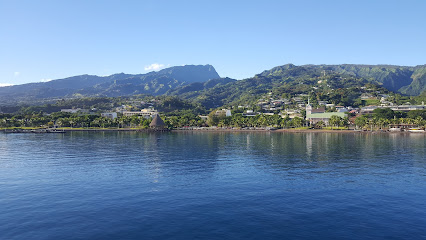
Museum of Tahiti and The Islands
Immerse yourself in the vibrant culture and history of French Polynesia at the Museum of Tahiti and The Islands, a cultural gem for all visitors.
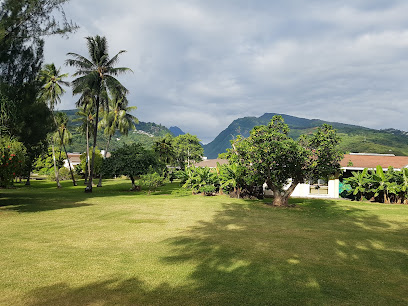
La Plage de Maui
Experience culinary delights and breathtaking ocean views at La Plage de Maui, a top destination in Taiarapu-Ouest, French Polynesia.

Grottes De Mara'a
Explore Grottes De Mara'a: A breathtaking blend of natural beauty and rich Polynesian history awaits in the enchanting caves of Tahiti.

Toatea Lookout
Experience breathtaking panoramic views of Moorea and Tahiti at Toatea Lookout, a must-visit observation deck in French Polynesia.

Harrison Smith Botanical Garden
Explore the vibrant flora of Harrison Smith Botanical Garden in Tahiti, a serene oasis showcasing the beauty of French Polynesia's unique biodiversity.

Musée de la Perle Robert Wan
Explore the rich heritage of pearl cultivation at Musée de la Perle Robert Wan, where art and culture of French Polynesia come to life.

Le Manoa
Experience the exquisite fusion of Tahitian and French cuisine at Le Manoa in Taravao, a must-visit restaurant for every traveler in French Polynesia.

Belvédère de Taravao
Discover the mesmerizing panoramic views at Belvédère de Taravao, the ultimate observation deck in Tahiti, French Polynesia.
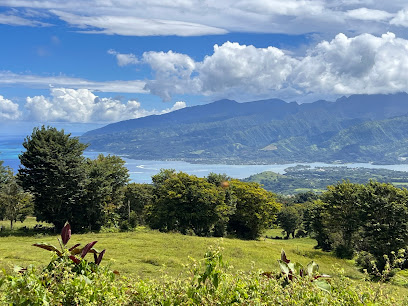
Papeete Catholic Cathedral
Discover the architectural beauty and spiritual significance of Papeete Catholic Cathedral, a must-visit landmark in Tahiti's vibrant capital.

Vanira Lodge
Experience the tranquility of Vanira Lodge in Taiarapu-Ouest, French Polynesia, where comfort meets breathtaking natural beauty.

Unmissable attractions to see
Belvedere Lookout
Experience the breathtaking beauty of Moorea at Belvedere Lookout, where stunning views and lush landscapes await every traveler.

Place Vai'ete
Explore Place Vai'ete, a stunning waterfront park in Papeete that blends natural beauty with vibrant local culture and community spirit.

Public Beach Ta'ahiamanu
Experience the serene beauty and vibrant culture of Public Beach Ta'ahiamanu in Moorea-Maiao, a perfect blend of relaxation and adventure.

Museum of Tahiti and The Islands
Explore the rich history and culture of French Polynesia at the Museum of Tahiti and The Islands, a captivating cultural center for all travelers.

La Plage de Maui
Discover La Plage de Maui, a stunning beach in French Polynesia offering beautiful views, local cuisine, and unforgettable experiences for every traveler.

Grottes De Mara'a
Explore the breathtaking Grottes De Mara'a, a stunning natural wonder in French Polynesia, featuring incredible geological formations and rich history.

Toatea Lookout
Discover stunning vistas at Toatea Lookout in Moorea-Maiao, French Polynesia—a must-visit observation deck for breathtaking views and unforgettable memories.

Musée de la Perle Robert Wan
Explore the beauty and culture of Tahitian pearls at the Musée de la Perle Robert Wan in Papeete, French Polynesia.

Papeete Catholic Cathedral
Discover the Papeete Catholic Cathedral, a stunning architectural gem and spiritual haven in the heart of French Polynesia, rich in culture and history.

'ATAE : Safari Océan ~ Tahiti
Discover the wonders of Tahiti's marine life with unforgettable whale watching and eco-friendly tours at 'ATAE: Safari Océan'.

Tahiti Lagoon Paradise
Explore Tahiti Lagoon Paradise, a breathtaking destination for snorkeling, swimming, and witnessing the vibrant marine life of French Polynesia.

Te Mana O Te Moana
Explore marine conservation at Te Mana O Te Moana, where adventure meets environmental education in the heart of French Polynesia.

Bougainville Park
Explore Bougainville Park, a lush oasis in Papeete, where vibrant flora meets stunning ocean views, perfect for relaxation and cultural experiences.

Vaihi Waterfalls
Discover the enchanting beauty of Vaihi Waterfalls in French Polynesia, a stunning natural wonder surrounded by lush greenery and rich cultural heritage.

Moorea Dark Waters
Discover the captivating underwater world and adventurous activities at Moorea Dark Waters, a must-visit attraction in French Polynesia.

Essential places to dine
La Plage de Maui
Experience exquisite Polynesian seafood at La Plage de Maui while enjoying stunning beach views in Taiarapu-Ouest.

Le Retro
Experience the essence of French Polynesian cuisine at Le Retro in Papeete - where every meal tells a story.

L'O A La Bouche
Experience the exquisite flavors of French Polynesia at L'O A La Bouche in Papeete - where culinary artistry meets local tradition.

Le Manoa
Experience the fusion of Tahitian flavors with French elegance at Le Manoa in Taravao, an unmissable culinary destination.
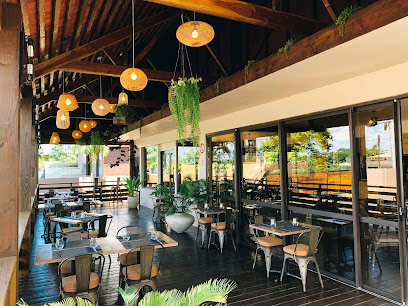
Loula et Rémy
Discover exquisite local flavors at Loula et Rémy in Taiarapu-Est - a culinary haven in French Polynesia.

Restaurant HOANUI
Experience authentic Polynesian cuisine at Restaurant HOANUI in Mataiea, where fresh ingredients meet breathtaking views.
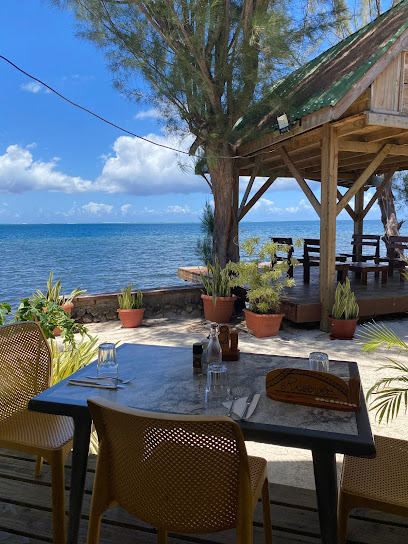
Restaurant Bar du Musee Gauguin
Experience exquisite Polynesian flavors blended with French culinary artistry at Restaurant Bar du Musee Gauguin in Teva I Uta.

Restaurant Terre-Mer
Experience exquisite French-Pulynesian fusion cuisine at Restaurant Terre-Mer, set against stunning coastal views in Taiarapu-Est.

Kozy restaurant
Experience authentic Tahitian cuisine at Kozy Restaurant in Papeete – where fresh flavors meet island hospitality.

McDonald's
Experience familiar flavors at McDonald's in Taiarapu-Est while exploring the natural beauty of French Polynesia.

Restaurant T.K.T Panda Taravao
Experience authentic Polynesian cuisine at Restaurant T.K.T Panda in Taravao - a delightful blend of tradition and modern flavors.

Coconut Station
Discover Coconut Station: A serene dining spot in Tahiti serving fresh seafood with stunning marina views.

Restaurant Taumatai
Experience authentic Polynesian cuisine with breathtaking views at Restaurant Taumatai in Taiarapu-Est.

Ô TUMU MAPE
Discover exquisite seafood dishes at Ô TUMU MAPE, where breathtaking ocean views meet authentic Tahitian hospitality in Mataiea.

L'escale Du Paquebot FRANCE
Discover fast food with a local twist at L'escale Du Paquebot in stunning Taiarapu-Ouest, French Polynesia.

Markets, malls and hidden boutiques
TAHITI PAS CHER - TARAVAO
Experience the spirit of Tahiti at Tahiti Pas Cher in Taravao, where authentic Polynesian home goods await your discovery.
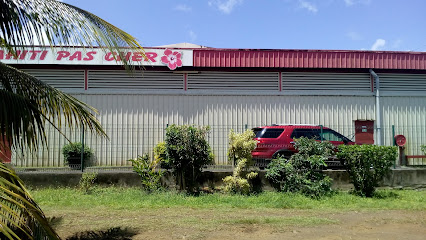
Magasin Tautira
Experience the essence of island life at Magasin Tautira in Taiarapu-Est, where local flavors and friendly faces await every visitor.

Maitai dépôt-vente Taravao
Explore the charm of Maitai Dépôt-Vente Taravao, where unique treasures and authentic Polynesian culture await your discovery.

Tahitian Tasty
Experience the vibrant flavors of Tahiti at Tahitian Tasty, your go-to destination for authentic Polynesian culinary delights.

Magasin Notehei
Discover the authentic flavors of French Polynesia at Magasin Notehei, a charming grocery store in Taiarapu-Ouest.

All Vision Tahiti
Discover exquisite handcrafted jewelry at All Vision Tahiti, where each piece reflects the beauty of the islands and the spirit of Polynesia.
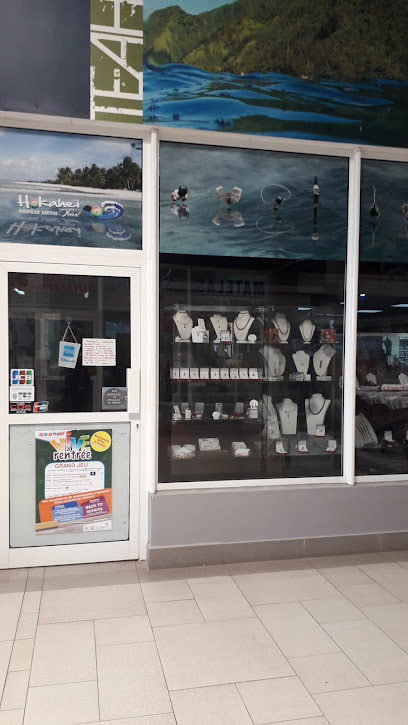
GEMO TARAVAO - Vêtements et Chaussures
Explore GEMO TARAVAO in Tahiti for vibrant clothing and footwear that captures the spirit of French Polynesia, perfect for every traveler.

Tahiti Vaposhop Taravao
Discover Tahiti Vaposhop Taravao: your destination for premium vaporizers in the heart of French Polynesia.

Firi&Co Taravao
Discover the cultural treasures of French Polynesia at Firi&Co Taravao, where local craftsmanship meets a warm, inviting atmosphere.

Centre Moana Iti
Explore the vibrant Centre Moana Iti in Taiarapu-Est for an unforgettable shopping experience featuring local crafts and international brands.
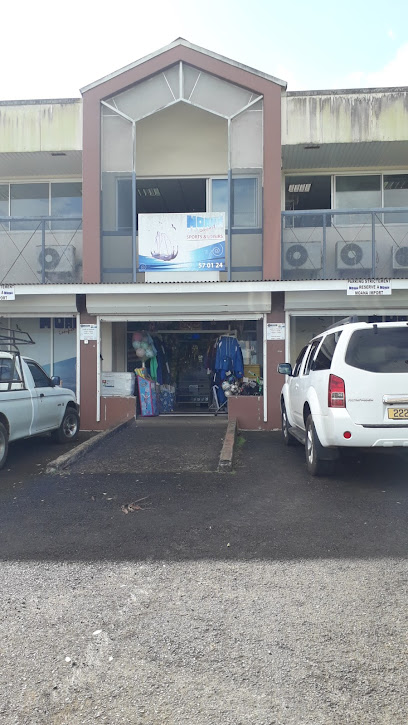
Ls Proxi Afaahiti
Your go-to convenience store in Taiarapu-Est, offering essential supplies and local treats for every traveler in beautiful French Polynesia.

Papara
Explore Papara, a charming gift shop in French Polynesia, offering unique local crafts and souvenirs that capture the spirit of paradise.

NESIAN Store
Explore NESIAN Store in Tahiti for unique clothing that embodies the vibrant spirit of Polynesian culture and artistry.

TAAROA SHOP TARAVAO
Explore Taaroa Shop in Taravao, where unique Polynesian fashion meets modern style in a charming boutique atmosphere.
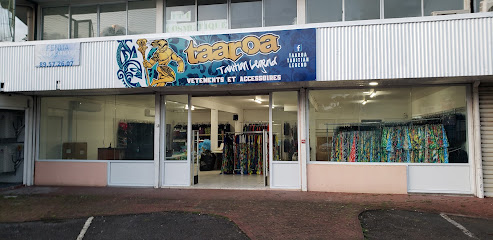
Moana Import
Discover the essence of Polynesian fashion at Moana Import, where local artistry meets unique clothing styles for every tourist.

Essential bars & hidden hideouts
Bora Bora lounge
Experience the vibrant ambiance and tropical delights at Bora Bora Lounge, your ultimate relaxation spot in French Polynesia.

Le Manoa
Experience the fusion of French and Polynesian cuisines at Le Manoa, a must-visit restaurant in Taravao offering stunning views and delightful flavors.

L'ivresse Tahiti
Discover L'ivresse Tahiti, where exquisite wines meet the charm of Papeete, offering an unforgettable experience in the heart of French Polynesia.

La Kantine Pizzéria de qualité
Experience the best gourmet pizzas and vibrant bar atmosphere in Taiarapu-Est, French Polynesia at La Kantine Pizzéria.

Be You
Experience the vibrant nightlife of Tahiti at Be You, a bar offering cocktails, local flavors, and a taste of Polynesian culture.

Lux Tahiti
Discover the lively atmosphere and local flavors at Lux Tahiti, the perfect bar for a memorable night out in Papeete.

Smoossab - Smoothies et jus de fruits naturel
Experience the taste of paradise at Smoossab, the premier bar for smoothies and natural fruit juices in Taiarapu-Ouest, French Polynesia.

Le Perchoir Tahiti
Discover the vibrant nightlife of Papeete at Le Perchoir Tahiti, where stunning views and exquisite cocktails create unforgettable moments.

Heiva Lounge Bar
Experience the vibrant spirit of Polynesia at Heiva Lounge Bar, the perfect escape for relaxation and tropical indulgence in Tahiti.

Healthy Zone Tahiti
Explore Healthy Zone Tahiti, a vibrant bar blending tropical flavors and a serene atmosphere in the heart of French Polynesia.

Virgin Tiki Bar
Experience the vibrant atmosphere and tropical cocktails at Virgin Tiki Bar, the ultimate nightlife destination in Papeete, French Polynesia.

LE MATI'S BAR
Discover the vibrant atmosphere and refreshing drinks at Le Mati's Bar in Papara, a perfect getaway for tourists seeking relaxation and local flavor.

Vairao Spring Water (Sources d'Eau pure)
Experience the natural refreshment and beauty of Vairao Spring Water in the heart of French Polynesia, a true oasis for the senses.

Zizou Bar
Experience the vibrant nightlife of Papeete at Zizou Bar, where local culture meets relaxation in the heart of French Polynesia.

Summer Grill
Discover the culinary treasures of Tahiti at Summer Grill, where fresh flavors and stunning views create an unforgettable dining experience.

Local Phrases about Tahiti Iti
-
- HelloIa orana
[Yah oh-rah-nah] - GoodbyeNana
[Nah-nah] - YesE
[Ay] - NoAita
[Eye-tah] - Please/You're welcomeMauruuru
[Mah-roo-roo] - Thank youMauruuru
[Mah-roo-roo] - Excuse me/SorryUa here au
[Oo-ah hair-ray ow] - How are you?Eaha te huru?
[Ay-ah teh hoo-roo] - Fine. And you?Maitai. Oe haere?
[My-tie. O-ay hair-ray] - Do you speak English?Ua haere te reo anglais?
[Oo-ah hair-ray teh ray-oh ang-leh] - I don't understandAita i ni'a
[Eye-tah ee nee-ah]
- HelloIa orana
-
- I'd like to see the menu, pleaseEaha te menu?
[Ay-ah teh meh-noo] - I don't eat meatAita i te manao
[Eye-tah ee teh mah-nah-oh] - Cheers!Manuia!
[Mah-noo-ee-ah] - I would like to pay, pleaseEaha te moni?
[Ay-ah teh moh-nee]
- I'd like to see the menu, pleaseEaha te menu?
-
- Help!A muri!
[Ah moo-ree] - Go away!Haere i te tahi!
[Hair-ray ee teh tah-hee] - Call the Police!Tia i te hau
[Tea ee teh how] - Call a doctor!Tia i te taata rave
[Tea ee teh tah-tah rah-vay] - I'm lostAroha
[Ah-roh-hah] - I'm illAita i te ora
[Eye-tah ee teh oh-rah]
- Help!A muri!
-
- I'd like to buy...Eaha te mea?
[Ay-ah teh may-ah] - I'm just lookingE te tau?
[Ay teh tow] - How much is it?Eaha te moni?
[Ay-ah teh moh-nee] - That's too expensiveUa rahi te moni
[Oo-ah rah-hee teh moh-nee] - Can you lower the price?Aita i te moni
[Eye-tah ee teh moh-nee]
- I'd like to buy...Eaha te mea?
-
- What time is it?Eaha te hora?
[Ay-ah teh hoh-rah] - It's one o'clockE toru
[Ay toh-roo] - Half past (10)Te toru i te piti
[Teh toh-roo ee teh pee-tee] - MorningPoipoi
[Poy-poy] - AfternoonApōpō
[Ah-poh-poh] - EveningAhiahi
[Ah-hee-ah-hee] - YesterdayIeri
[Ee-air-ee] - TodayHiamoe
[Hee-ah-moh-eh] - TomorrowApo
[Ah-poh] - 1Tahi
[Tah-hee] - 2Rua
[Roo-ah] - 3Toru
[Toh-roo] - 4Whā
[Fah] - 5Rima
[Ree-mah] - 6Ono
[Oh-no] - 7Whitu
[Wee-too] - 8Waru
[Wah-roo] - 9Iwa
[Ee-wah] - 10Tekau
[Teh-kow]
- What time is it?Eaha te hora?
-
- Where's a/the...?I tehea...?
[E teh-heh-ah] - What's the address?Te aha te tuhinga?
[Teh ah-hah teh too-heen-gah] - Can you show me (on the map)?Aita i te papa?
[Eye-tah ee teh pah-pah] - When's the next (bus)?Eaha te rā?
[Ay-ah teh rah] - A ticket (to ....)Te perehā (ki ...)
[Teh peh-reh-hah (kee)]
- Where's a/the...?I tehea...?
History of Tahiti Iti
-
Tahiti Iti, also known as the 'small Tahiti,' has a rich history dating back to the ancient Polynesians who first settled the area around 1000 AD. These early settlers brought with them advanced navigational skills, sophisticated agricultural practices, and a deep spiritual connection to the land and sea. Archaeological sites such as the marae (sacred communal places) and petroglyphs found in Tahiti Iti provide glimpses into the lives and beliefs of these early Polynesians.
-
The arrival of European explorers marked a significant turning point in the history of Tahiti Iti. In 1767, British explorer Samuel Wallis became the first European to visit Tahiti, followed by French explorer Louis-Antoine de Bougainville in 1768. These encounters opened the door to increased European interest and eventual colonization. The interactions between the indigenous Tahitians and Europeans were complex, involving trade, cultural exchange, and sometimes conflict.
-
In the 19th century, Tahiti Iti, along with the rest of French Polynesia, came under French control. In 1842, France established a protectorate over Tahiti and its dependencies, which later became a full colony in 1880. This period saw significant changes in the local society, including the introduction of Christianity, the establishment of French administrative structures, and the influence of Western culture on traditional Tahitian ways of life.
-
During World War II, Tahiti Iti, like many other parts of the Pacific, played a strategic role. The island served as a base for Allied forces, contributing to the broader war efforts in the Pacific theater. This period brought further infrastructural development and increased interaction with the outside world, leaving a lasting impact on the local community and economy.
-
In recent decades, there has been a strong movement towards cultural revival and preservation in Tahiti Iti. Efforts to restore and maintain traditional practices, languages, and crafts have gained momentum. Festivals, such as the Heiva I Tahiti, celebrate Tahitian culture through dance, music, and sports, showcasing the resilience and vibrancy of the local heritage. This cultural renaissance is a testament to the enduring spirit of the Tahitian people and their commitment to preserving their unique identity.
Tahiti Iti Essentials
-
Tahiti Iti is part of the island of Tahiti in French Polynesia. The nearest international airport is Faa'a International Airport (PPT) in Papeete, Tahiti. From Papeete, you can take a taxi, rent a car, or use local buses to reach Tahiti Iti. The journey by road usually takes about 1.5 to 2 hours, depending on traffic.
-
Transportation options in Tahiti Iti include rental cars, taxis, and local buses (Le Truck). Renting a car provides the most flexibility for exploring the region at your own pace. Taxis are available but can be expensive for longer trips. The local buses are an affordable option, but they have limited schedules and routes. Bicycles and scooters can also be rented for shorter trips.
-
The official currency in French Polynesia is the CFP Franc (XPF). Credit cards are widely accepted in hotels, restaurants, and larger shops, but it's advisable to carry some cash for smaller purchases and in more remote areas. ATMs are available in major towns, but it's a good idea to withdraw sufficient cash before heading to more secluded parts of Tahiti Iti.
-
Tahiti Iti is generally a safe destination, but standard travel precautions should be taken. Petty crime, such as pickpocketing, can occur in tourist areas, so keep an eye on your belongings. Avoid isolated areas at night and stick to well-lit streets. The towns of Taravao and Teahupo'o are safe but always remain aware of your surroundings.
-
In case of emergency, dial 18 for fire services, 17 for police, and 15 for medical emergencies. The main medical facility in Tahiti Iti is the Taravao Hospital. It's advisable to have travel insurance that covers medical emergencies. Pharmacies are available in larger towns for minor health issues and over-the-counter medications.
-
Fashion: Do dress modestly, especially when visiting local villages and religious sites. Avoid overly revealing clothing. Religion: Do respect local customs and traditions. When visiting Marae (sacred sites), dress conservatively and behave respectfully. Public Transport: Do greet the driver and other passengers when boarding local buses. Don’t eat or drink on public transport. Greetings: Do greet people with a warm 'Ia Orana' (hello). A light handshake is common. Eating & Drinking: Do try local Polynesian dishes and accept food offerings graciously. Don’t refuse hospitality, as it is considered impolite.
-
To experience Tahiti Iti like a local, visit the local markets in Taravao for fresh produce and traditional Polynesian crafts. Engage with locals, who are often friendly and willing to share their culture and stories. Don't miss the iconic surf break of Teahupo'o, especially during the surf competitions. For a unique cultural experience, attend a traditional Polynesian dance show or a Heiva festival if your visit coincides with these events.
Trending Landmarks in Tahiti Iti
-
Water Gardens Vaipahi
-
Arahoho Blowhole
-
Fa'aruma'i Waterfalls
-
Place Vai'ete
-
Pā'ōfa'i Gardens
-
Museum of Tahiti and The Islands
-
La Plage de Maui
-
Grottes De Mara'a
-
Toatea Lookout
-
Harrison Smith Botanical Garden
-
Musée de la Perle Robert Wan
-
Le Manoa
-
Belvédère de Taravao
-
Papeete Catholic Cathedral
-
Vanira Lodge
Nearby Cities to Tahiti Iti
-
Things To Do in Papeete
-
Things To Do in Moorea
-
Things To Do in Tetiaroa
-
Things To Do in Huahine
-
Things To Do in Raiatea
-
Things To Do in Bora Bora
-
Things To Do in Rangiroa
-
Things To Do in Maupiti
-
Things To Do in Muri
-
Things To Do in Matavera
-
Things To Do in Ngatangiia
-
Things To Do in Avarua
-
Things To Do in Takitumu
-
Things To Do in Avatiu
-
Things To Do in Nikao




